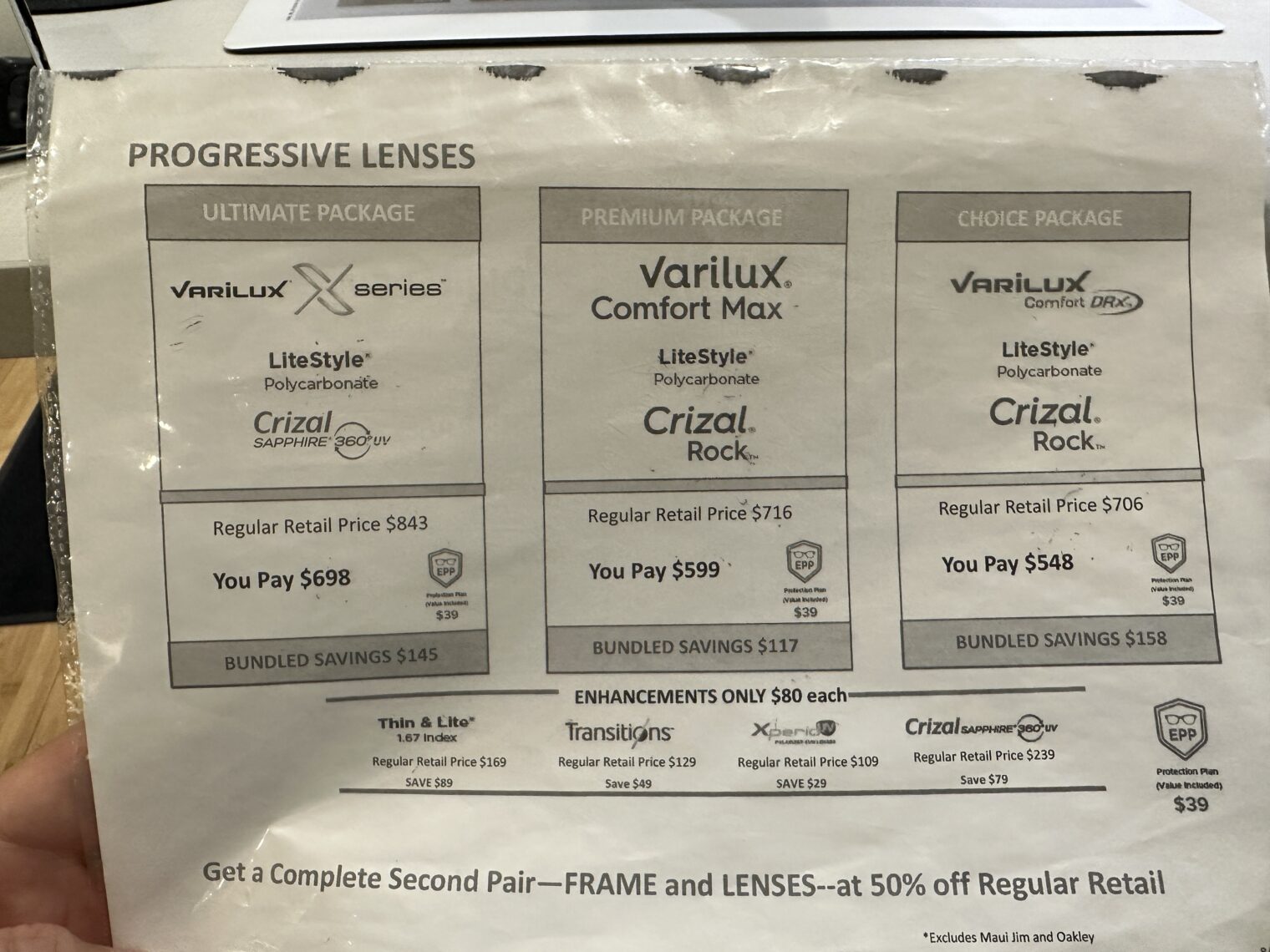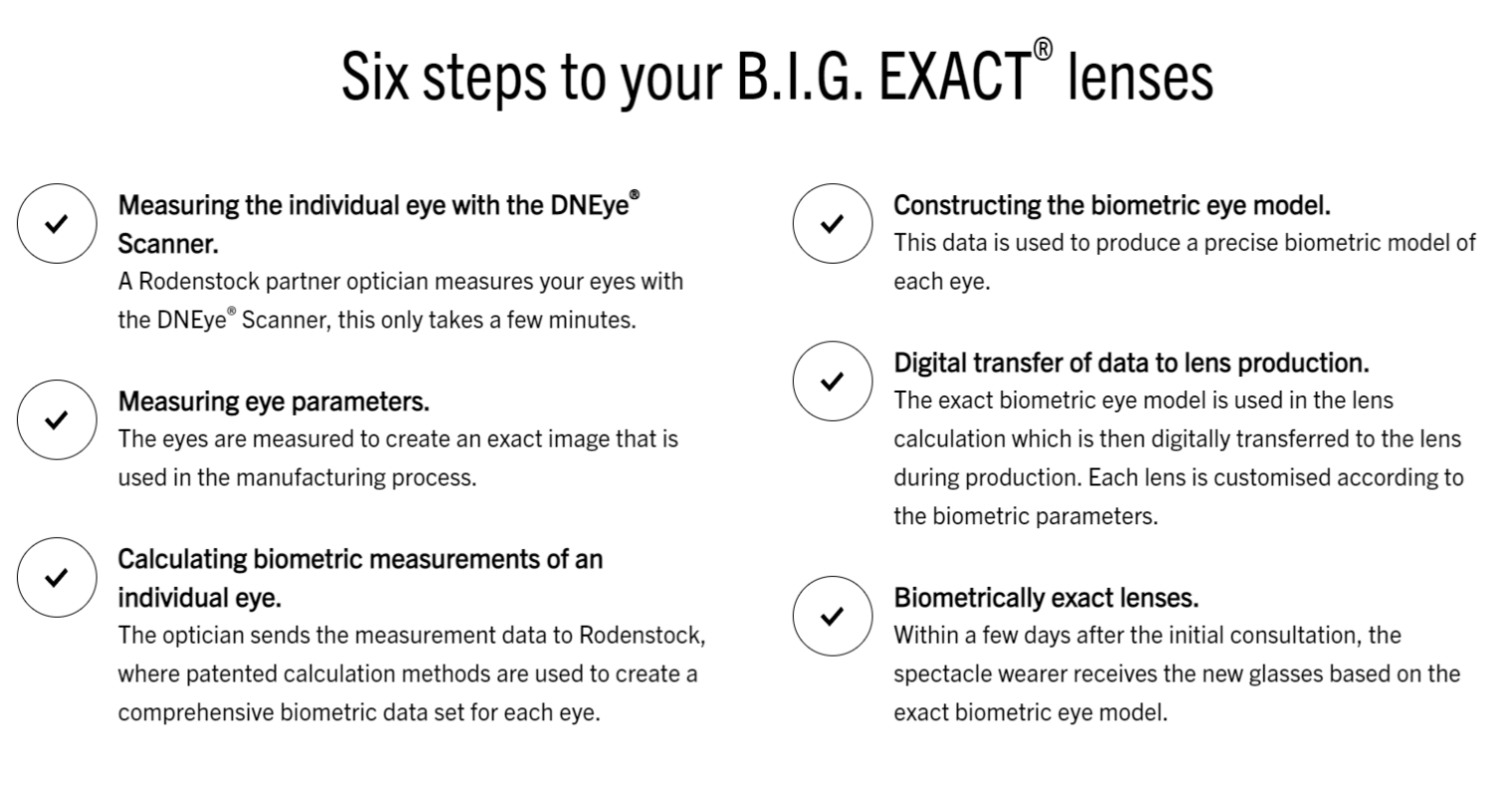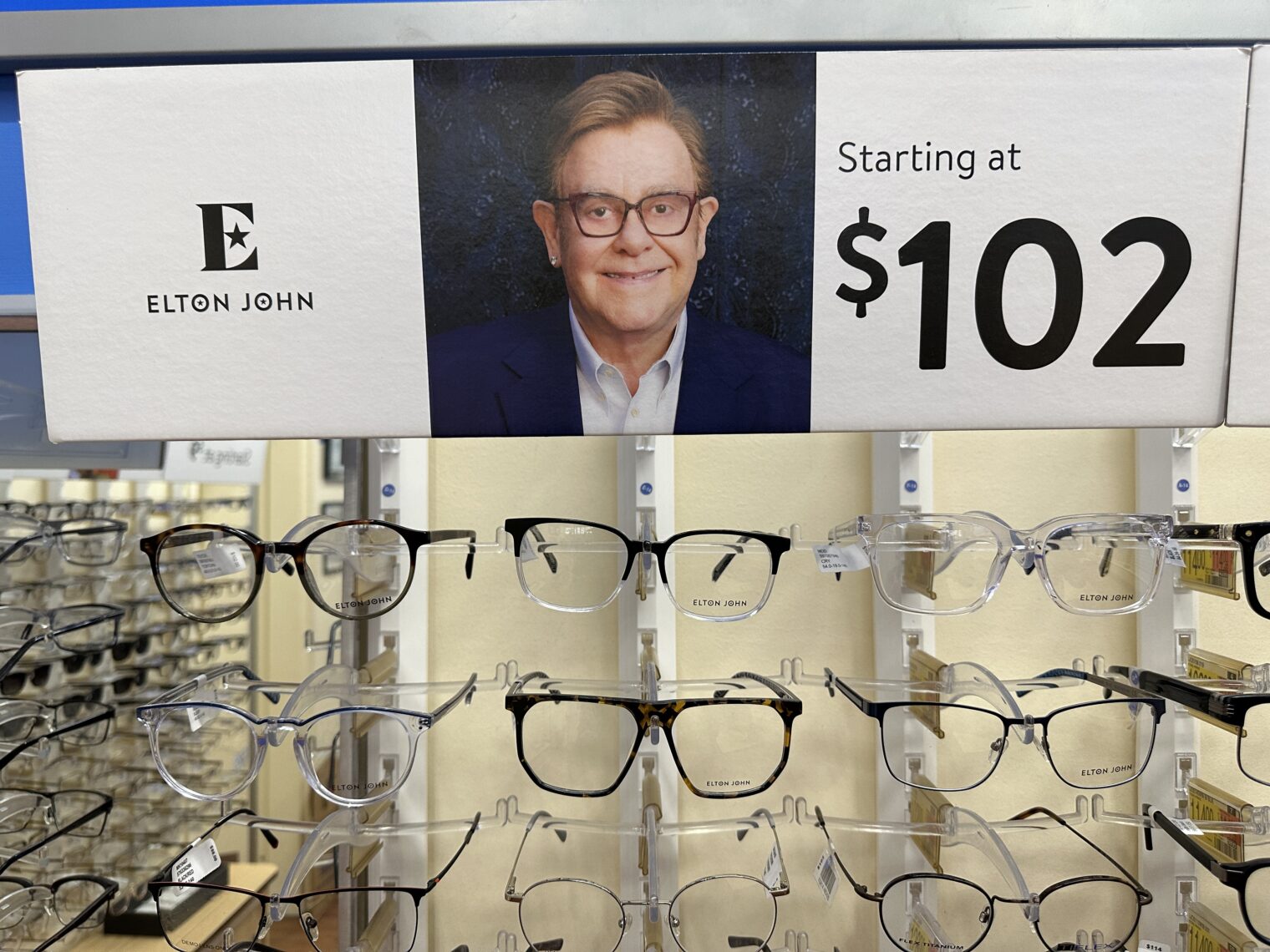Because I voted for Bernie I wear progressive eyeglasses. These fix a touch of adolescent myopia and astigmatism (for distance vision) and old-guy-needs-reading-glasses on the lower portion. To show my support for our 2SLGBTQQIA+ brothers, sisters, and binary-resisters, these are “Transitions” lenses that darken when I venture out with Mindy the Crippler. The dark glasses ensure that we aren’t recognized by the Paparazzi.
I recently got an updated prescription and things have changed a bit since my previous exam (pre-coronapanic). My frames are in good shape (hard to damage your eyeglasses when you’re ordered to stay at home) so the place that did the exam suggested that I replace the lenses… for about $780:
If memory serves, which it probably doesn’t, the complete frames+lenses back in 2019 were about $400 each. Now the lenses alone are over $600 for the ghetto version. As Californians have recently discovered, living one’s progressive ideals isn’t always cheap. What’s the difference among these three options within the Varilux line? The optician says that it is all about the field of view. This sort of makes sense if you consider eyeglass lenses to be like binoculars, but I’m not sure why they should be.
Muddying the waters to some extent is the fact that Varilux is made (in China?) by Essilor, a French company. They were the pioneers in this area and the French have some history with optics, e.g., Angénieux makes some great lenses for cinematography. Nonetheless, France is not one of the nations that comes to mind when great optics are being discussed. What do the Japanese have to offer? Nikon has a web page, but hardly any retailers in the U.S. Canon and Sony don’t seem to be in this product area at all. Seiko makes eyeglass lenses. Asahi-Lite offers progressives in the U.S. It looks as though Tokai and TALEX are also Japanese companies. I can’t figure out which of these is the best or if any of them compete with Varilux. How about the Germans? Leica offers “Variovid Superior Progressive Lenses”. Zeiss seems to be the big competitor to Varilux in the U.S. market for high-end progressives. Rodenstock, the view camera photographer’s favorite, makes progressives starting from an individual eye scan:
(Sadly, this is available only in Europe and the UK. Is it U.S. regulations or the U.S. legal environment that are keeping this amazing company out of our purportedly competitive market? As noted in the comments, I talked to a Dutch optometrist who sells Zeiss lenses and isn’t all that impressed with the Rodenstock idea. The best Zeiss photochromic lenses over there are €1220 for a pair. For the fancy Rodenstock it would be €1358. Then add a little something for frames!)
I can’t find good information about any of these products, though. I’ll be getting two pairs of lenses, so we’re talking about potentially $1500+ in spending plus 7 percent sales tax (6 percent to support the fascist tyranny of Ron DeSantis and 1 percent to keep Palm Beach County’s luxurious services going).
Readers: Have you ever gone from “basic progressive” to “premium progressive” and noticed an improvement in field of view? Have you figured out which brand of high-end progressive lenses is the best? (I guess there is always the option of assuming that Costco has figured this out and rolled it into their optical shop.)
Update: As part of my two-year boycott of the Jupiter, Florida Target, I stopped into the Jupiter, Florida Walmart. The optical department there sells Nikon wide-field progressive lenses for $$280 plus $85 for the Transitions feature. If you want to show your support for the 2SLGBTQQIA+ community without glasses that darken in UV light, Elton John-brand frames are available:
Nikon seems to be playing the same game that the mattress companies use. The Nikon wide-field progressive lenses at Walmart are branded “Nikon Focus”. At independent opticians, Nikon offers “Presio” and “Seemax”. Is this an alternative to the Essilor Empire? The nikoneyes.com web site has a copyright banner across the bottom that references Essilor:
It’s a little confusing, but it might be because Nikon is using the Essilor TotalShield anti-scratch anti-reflective coating. That’s confusing because Nikon has been coating lenses since at least the 1950s (some mostly-peaceful Germans developed modern A-R coatings in 1935).
Related:
- “A comparative study of the Seiko P-3 and Varilux 2 progressive addition lenses” (Brookman, et al. 1988): “89.7% of the patients preferred the Seiko lens over the Varilux”
- an informal study by a optician (post #10) suggesting that Seiko is as good or better than Varilux
- one optician’s opinion on a range of products: says Leica, Zeiss, Rodenstock (not the fancy one based on an individual eye scan), and Seiko are better than the rest
- ReplaceALens.com that will sell the higher-end Varilux with Transitions and a Crizal anti-reflective coating for about $460.
- Mask that won’t fog eyeglasses (February 2021)
- Heated eyeglasses for Age of Faith (in masks)? (October 2020)
- Bose Eyeglasses? (July 2019): I loved these, so of course they were a failure in the marketplace




Why are you buying eyeglasses from the mafia (aka Luxottica)?
I recently got a pair of “premium progressive” glasses, with all the features from Zenni for about $150. A second pair would be at 50% off. Which would leave you with $1500-$225=$1275 for avgas for your airplane.
The progressive lens from Zenni are excellent, it does take about one week to get use to them. Just make sure you know how to measure your PD, if your optometrist holds that number hostage.
https://www.zennioptical.com/
The lion kingdom just buys tiny lenses from 39dollarglasses & takes them off to read instead of buying progressive lenses. Don’t know what the requirements are for an expert witness.
My consistent experience with eyeglasses:
1) Glass is the best material. It doesn’t scratch. So naturally, it’s illegal in the US. I used to order mine from a shop in Hong Kong. Yes, I know it will be unpleasant if a baseball hits me in the eye. Come to think of it, that’s true with no glasses, too.
2) Expensive add-ons are a waste of money. Unlike camera lenses, the coatings on glasses wear off and look horrible when they do. Skip.
3) My progressives from Costco are fine. Recommended.
4) Glasses in general are a racket in the US, like all healthcare. We should be able to buy standard prescription lenses (-1, -2, etc) off the shelf like reading glasses, but of course, this is illegal, due to lobbying by the optometrists, who benefit from the law.
Priding myself on 20/20 vision I started to feel need for reading glasses recently. So I picked up a bunch of +1 and +2 from a local outlet mall for $1.99 pair. Did not like feel looking through them for a long time, too tiring to read. So for now I have to either adjust distance to a book/tablet, use looking glass or use bright light, most of my vision loss seems to be ageing loss of light sensitivity and only at short distance. Also trying to slow worsening eyesight with a vitamin diet, it seems to work for now.
But no prescription is needed for +1 glasses, they are available at basement bargain prices.
Glass glasses are illegal in the US?
GC.
NY law prohibits the over-the-counter sale of readers if they exceed 2.75 diopters. I now use COSTCO. I really like COSTCO glasses, inexpensive and good quality.
Starting to need distance as well as old guy reading lenses.
I tried progressives and found the peripheral vision in distance to be terrible. I’ve tried a couple of different versions and still worse distance peripheral compared to no glasses.
I wonder if the getting used to it, means getting used to the brain filling in with bad data. .
I’ve switched to two separate sets distance/reading. Long term will go Lasik to fix the distance.
Phil as a professional pilot, progressive lenses have been a game changer. The latest progressive offering from Costco are very good and rival big band name (Varilux) offerings.
I got progressives from Costco several years ago and have no complaints. Tip: buy vision insurance (I’ve been told that VSP is the best), as they cover one pair of lenses per year. I saved several hundred dollars when getting my coke-bottle eyeglasses filled at a non-Costco specialty vision place.
I got hold of an optometrist in the Netherlands (friend of a friend). He sells Zeiss, but not Rodenstock. He has talked to a few Rodenstock believers with these personalized lenses and they did not report being in a whole new world of visual wonder. The Zeiss religion is that the glorious Rodenstock world is better in theory than in practice because “the eye is not static enough and the frames are never in the exact the same position on the nose”.
(Being a name-brand progressive in the Netherlands is not cheap, either. The top-of-the-line Zeiss lenses are €600+ with all of the coatings and support for transitioning. That translates to over 640 Bidies, but it presumably includes VAT to keep the government there running. By contrast, Florida has no sales tax on prescription eyewear.)
Bernie?
Feel betrayed by him too?
Hatred for Hillary? Then vote Stein?
Funny paths we took to get here.
Ted: I do not feel betrayed by Bernie. He is wonderfully consistent and logical, which distinguishes him from the herd of American politicians! His Medicare for all idea is better, in my opinion, than our current worst-of-all-worlds health care system. (See state-sponsored NPR regarding a U.S. hospital trying to scam a Swiss tourist out of 3X what they would ordinarily charge an insured American: https://www.npr.org/sections/health-shots/2023/05/23/1177149738/he-visited-the-u-s-for-his-daughters-wedding-and-left-with-a-42-000-medical-bill ). Regarding the rest of his ideas, I don’t agree with many of them but at least they are coherent ideas that Congress could react to and it would challenge them to come up with their own coherent ideas.
For example, Bernie demands taxpayer-funded housing for everyone, which makes logical sense, unlike the current system in which a favored group gets free housing and others are put on an infinite waiting list. Congress could look at Bernie’s demand and either implement it or say “maybe nobody should get a free house unless physically disabled.”
While not specifically for this scenario, I noticed before that getting spare pare or even first pair on Zenni usually works out pretty well. Even if I get all the options it’s still cheaper than local options and they don’t care if my prescription is “recent”.
Now for progressives, I did monovision ICL and it’s wonderful. One eye for close, one eye for far. But because FDA cares so much about your safety, Philip, you’ll have to go abroad to get it. Anyway, if you are getting into lens replacement territory, get good multifocal lens, a friend got his in Mexico and is completely happy – doesn’t need glasses for any distance. It looks like they just start being available in US, regular lenses they peddle for replacement here is complete garbage.
Thanks, SK. What do you mean “get good multifocal lens”? I have multifocal lenses already, don’t I? A progressive lens is a multifocal lens. It just doesn’t have a noticeable line across the middle.
Apologies, I jump through 3 different eye corrections in my post:
I used to wear glasses, mostly used Costco and Zenni.
Few months ago I rushed to do ICL since infinitely wise FDA cuts off ICL at age 45 for Americans. Why it’s ok for older people in other countries I don’t know, lol. ICL is when they implant extra lens into your eye between your own lens and iris. Essentially it’s like permanent contact lens. This procedure is less invasive and has better results than LASIK. Of course twice as expensive. For ICL I did “monovision”, aka one eye is undercorrected so I can see at any distance without glasses. ICL is fully reversible.
My friend went to Mexico and replaced lenses in *his eyes* with fancy multi-zone multi-focal lenses so at his advanced age he doesn’t need glasses at any distance at the cost of somewhat lower contrast. Very happy, says it’s a great trade-off.
Or, yeah, for ICL fancy multi-focal lens is available in the other countries already, not in the USA.
SK: I had planned to invest in some new eyeglasses this summer, but eye surgery wasn’t on my agenda! The very thought of them sticking stuff into my eyes makes me shiver with fear.
I don’t mind wearing glasses. The polycarbonate means I’m wearing safety glasses all the time. And I don’t need sunglasses because I’m following 2SLGBTQQIA+ with my Transitions. The ICL lenses you’re talking about aren’t also transitions, are they?
There is value in full-time safety glasses. NAACP has issued a travel advisory for Florida. What if there is mostly peaceful civil unrest in Jupiter?
I have had progressives for many years, the lenses if i recall correctly are Zeiss i dont remember the details, but am not clear that they really accomplish more, are more useful than distance + taking your glasses off for close up. find in recent years I always remove them, never use them, when i need to read — what I recall my mother doing as well. And what Lion says. I spoke with my ophthalmologist about this and he didn’t disagree. When he examines me he keeps his glasses perched on his head. You might want to discuss with your ophthalmologist and see if he thinks progressives are worth the bother — and you say cost.
jdc: I’m already wearing progressives (and so should everyone else!). I just have an updated prescription that is slightly different. Prior to turning 40 I was able to read easily with my glasses off, but now I need about +2. I don’t desperately need glasses for distance, but I can hit 20/15 vision with glasses and that’s nice.
jdc,
The trick you described, and which I also use, works only for myopic eyes. Moreover, with an onset of presbyopia, the effect is somewhat neutralized and your myopia may “improve”, i.e. instead of previous -4.0 you can become -3.75 or similar.
The trick has an unfortunate side effect: when you take your glasses off in order to see something better and place the glasses on the floor, you can inadvertently step on them with an expected outcome. Happened to me at least 5 times.
In Japan I pay about $100 for eyeglasses (lenses with frames), although I could pay as much as twice that by being picky about which fast-fashion ripped-off frames I choose.
Frames bend and deform just due to body heat … I don’t think you want to reuse them. The lenses are not going to fit new frames if the frames go bad.
I’m not sure whether online handles astigmatism, but that’s usually not a big deal.
Dirty optometrist secret: inventory is a bear in that business, exacerbated by the quick changing fashion aspect. Therefore they can’t afford to stock all four or five sizes that good frames come in. Once someone explains this to you you cannot unsee all the misfitting eyeglasses out in the wild. There are three numbers on the temple piece: lens width, inter lens width, and temple length. Adding the first two numbers together gives you the lens center to center width, which should equal or exceed by no more than 3 mm your pupillary distance, PD, which needs to be measured with a machine that the oculist or optometrist has. Vertically your pupils should be slightly higher than center in the lenses.
I’ve been very pleased with progressives & frames from Warby Parker. They have storefronts in east south Florida so can get them adjusted locally if needed.
Phil, “field of view” (if I understand what you are referring to) is actually important in progressives. It can have a big impact on what David mentions here, when he describes poor “peripheral” vision. The first pair of progressives I got made me go crazy, even after 10 days of trying to get used to them (yeah, I know: move your head, not your eyes). I took them back to my optometrist and he said, let’s widen out that horizontal focal area. It worked brilliantly. I didn’t know this was a variable dimension that lens makers could impact, but it is worth asking about. Otherwise there was nothing “premium” about the lenses I got.